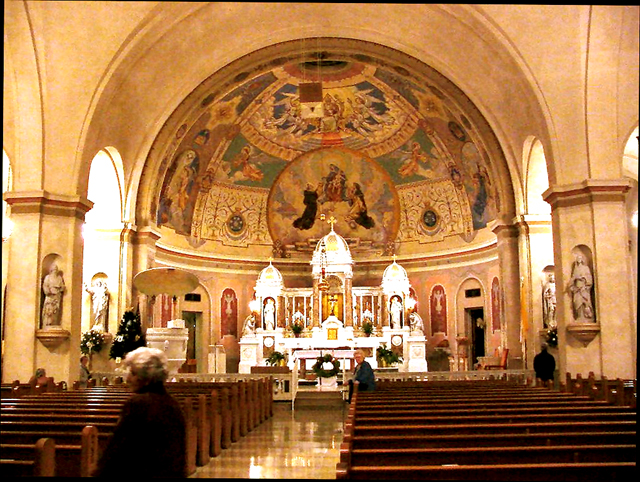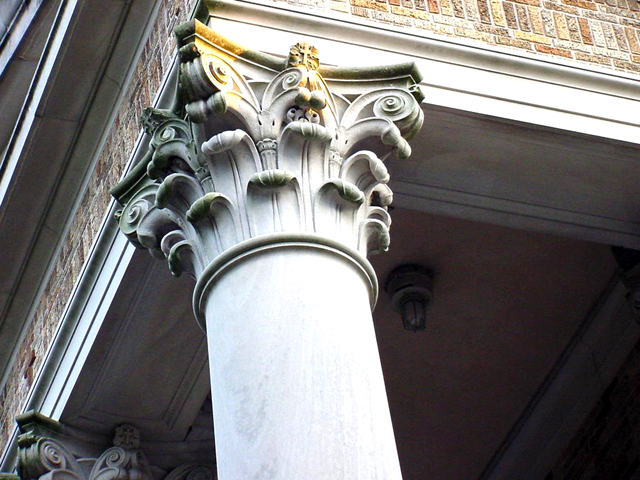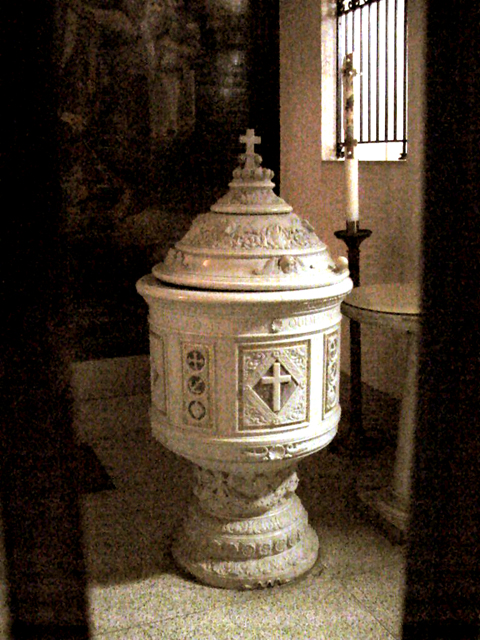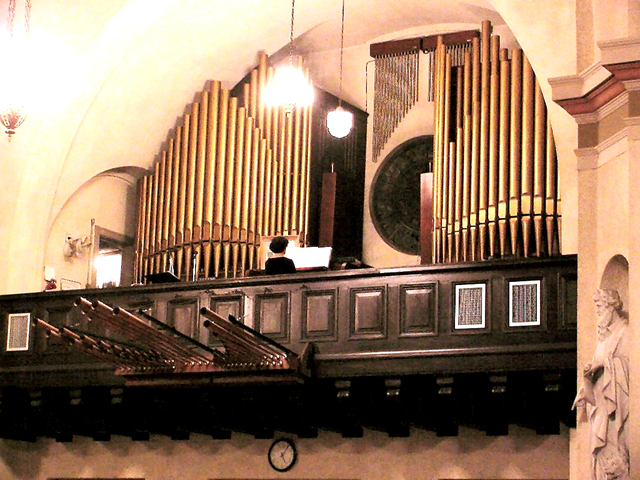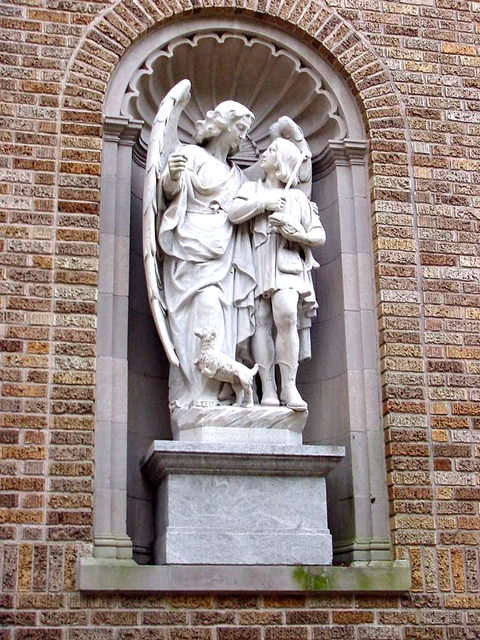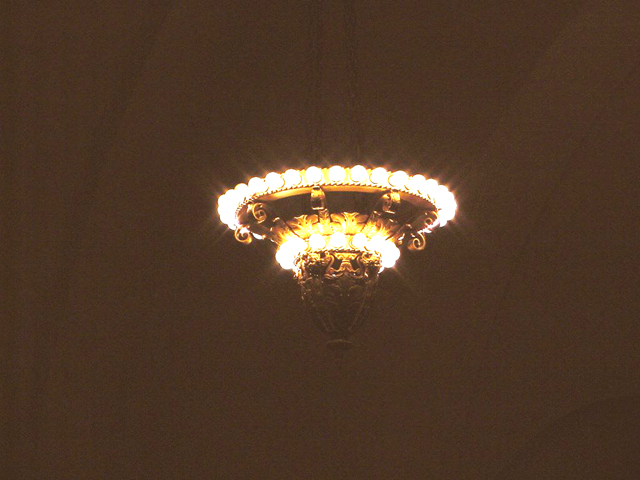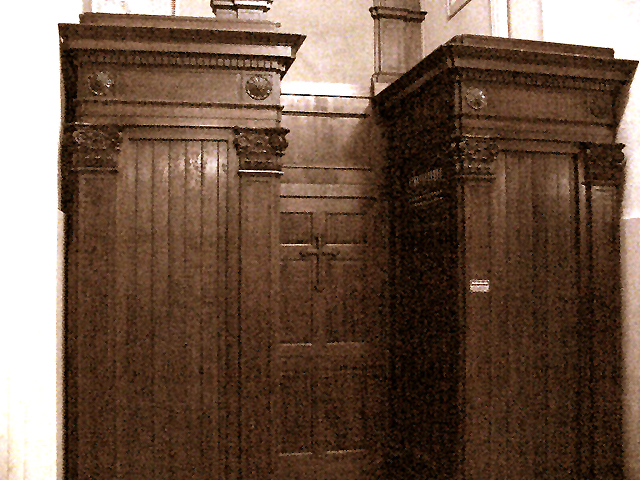3368 Esplanade Ave. New Orleans, LA.
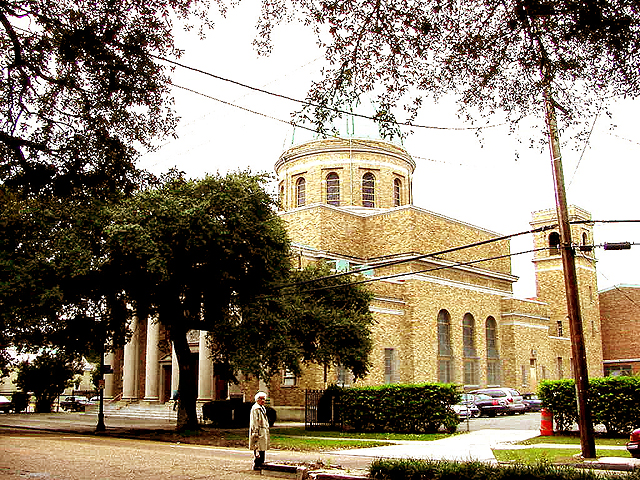
Although Holy Rosary Parish officially began in 1907, the history of the parish began as early as the settlement of the Bayou St. John and City Part (Allard Plantation) area. The historic waterway, discovered by Iberville in 1699, served as a passage from the Gulf to Lake Pontchartrain. Soon the Spanish missionaries came to settle Louisiana. At the mouth of the Bayou, a resort called Spanish Fort was constructed. Along the upper side of the Bayou was the Allard Plantation which, in the mid-1800's became New Orleans City Park. On the opposite side, a number of fine homes were constructed as was the Fair Grounds. The present Holy Rosary property was originally part of a large tract of land that extended to Gentilly Boulevard. It was sold by Joseph Chalon and his wife, in 1871, to Don Andres Almonester y Roxas, the builder of St. Louis Cathedral, who constructed a home for himself. Almonaster sold the land to Louis Blanc in 1792 and in 1799, it was acquired by Don Nicolas Maria Vidal, lieutenant governor of the Louisiana Colony. The land finally was purchased by Evariste Blanc and it remained in the Blanc and Denegre family until 1905.
Many fine homes had been constructed in the area including the Spanish Custom House (later the residence of Dr. and Mrs.I. M. DeMatteo), The Judge Tissot home and the Cucullu home. In 1855, Esplanade Avenue was opened to the Bayou on land obtained from the Blanc family. In 1856, St. Louis Cemetery was established on the site of the Old Bayou Cemetery originally founded by the City in 1835. Soon after the Civil War, the Fair Grounds was established and the beautiful Gallier home became the Louisiana Jockey Club. A burial ground for Civil War soldiers was established by Governor Nicholls in 1883. In 1861, a horse-drawn car line was established with a car barn on the site of the playground next to the present Cabrini High School property.
As the area around the Fabourg St. John and the Grand Route St. John steadily developed, a call went out from residents for a parish church. The area originally fell into the distant St.Ann Parish but the distance was excessive for the residents to travel. Mrs. Fanny Labatut Blanc offered a piece of ground in 1855 for the erection of a parish church, along with 300,00 bricks. The act of donation was passed in 1855 before Notary Octave de Armas. A small cottage on the property became the Church of the Nativity of the Blessed Virgin Mary. Father Maistre, the first pastor, deemed that the formation of the church was impractical and he went on to form St. Rose de Lima parish of which the parochial territory of Holy Rosary remained part until 1907.
In 1904, Mother Frances Xavier Cabrini, who would later become America's first canonized saint, trudged down the Esplanade looking for the ideal piece of land to construct an orphanage. In 1906, with the help of Captain Salvator Pizzati, Mother Cabrini constructed the Sacred Heart Orphanage. This project escalated the founding of Holy Rosary Parish. Also, the Denegre family were pressing the Archbishop to fulfill the commitment and construct a church as agreed, or else the land should revert back to the family. In 1907, Archbishop Blenk took the long-awaited action and appointed Rev. William J. Vincent to build a new parish to be called Our Lady of the Holy Rosary. On December 25, 1907, the first mass was celebrated at midnight in the old home. According to newspaper accounts, Archbishop Blenk officiated at the mass. Mrs. Denegre did not live to see the final church building as she passed away on September 12, 1910 at the age of 93.
Although the first mass was celebrated in the home as Mrs. Denegre had wished, a small chapel was completed in January of 1908. As the new parish grew, a school was needed. While the chapel remained overloaded, especially during the period following the fire that destroyed St. Rose of Lima, other parish needs took precedence over the construction of a new church. It was not until 1924 that construction of the permanent church was begun. On Sunday, November 22, 1925, the new church was finally dedicated. Father Vincent died in November of 1934, having taken the parish from its humble beginnings to a fully developed congregation with a school, church, societies and a strong Parish spirit. It was found that Father Vincent had personally financed a modest part of the parish works.
Father Vincent was followed by Msgr. Francis Canon Racine, Bishop L. Abel Caillouet who contributed to the strong growth and parish spirit. Today, Our Lady of the Holy Rosary Parish remains a strong bastion of faith in the Archdiocese.
References: Golden Jubilee publication by Roger Baudier, Sr. KSG, LLD. and various documents contained in the New Orleans Public Library.
